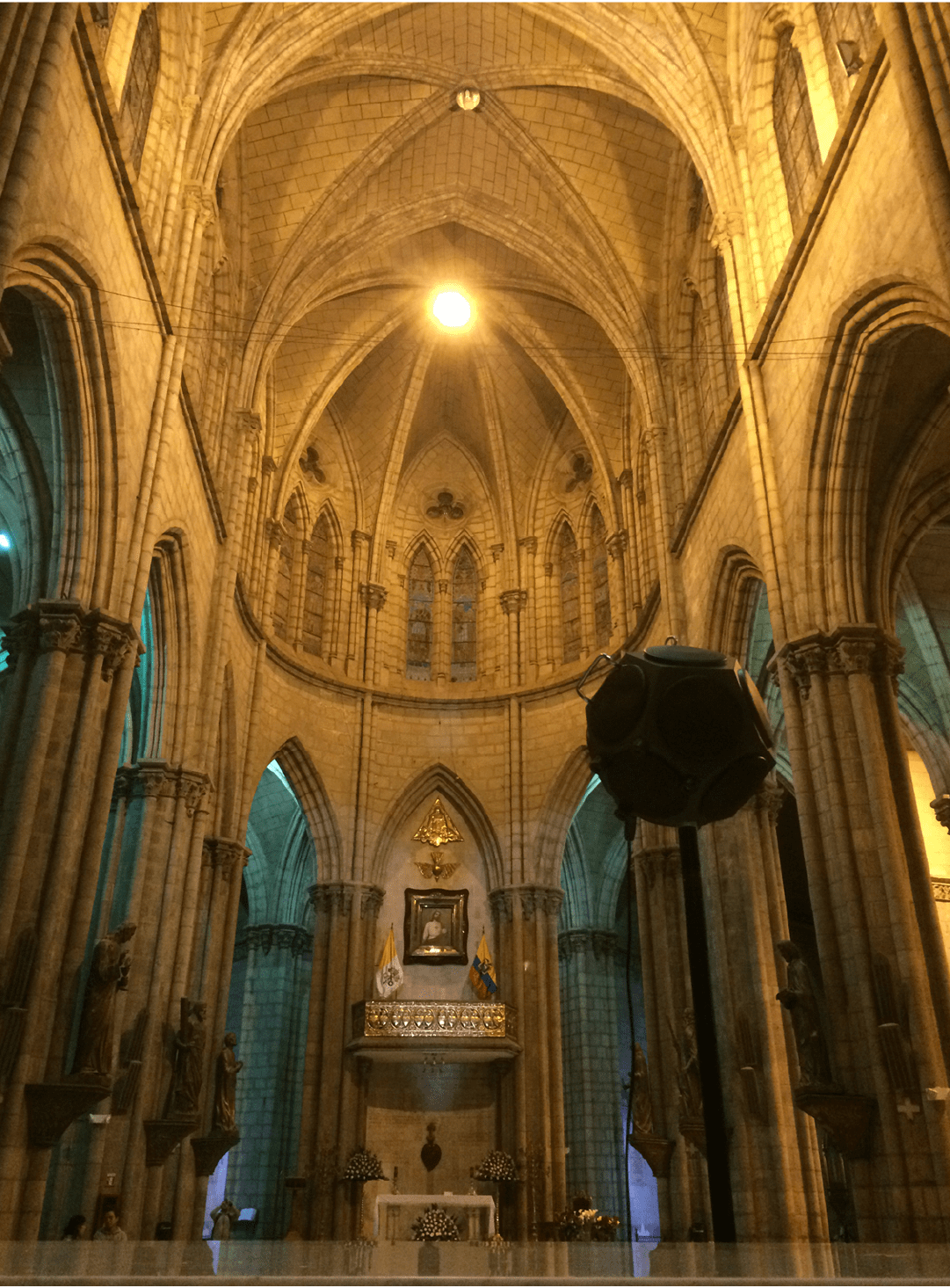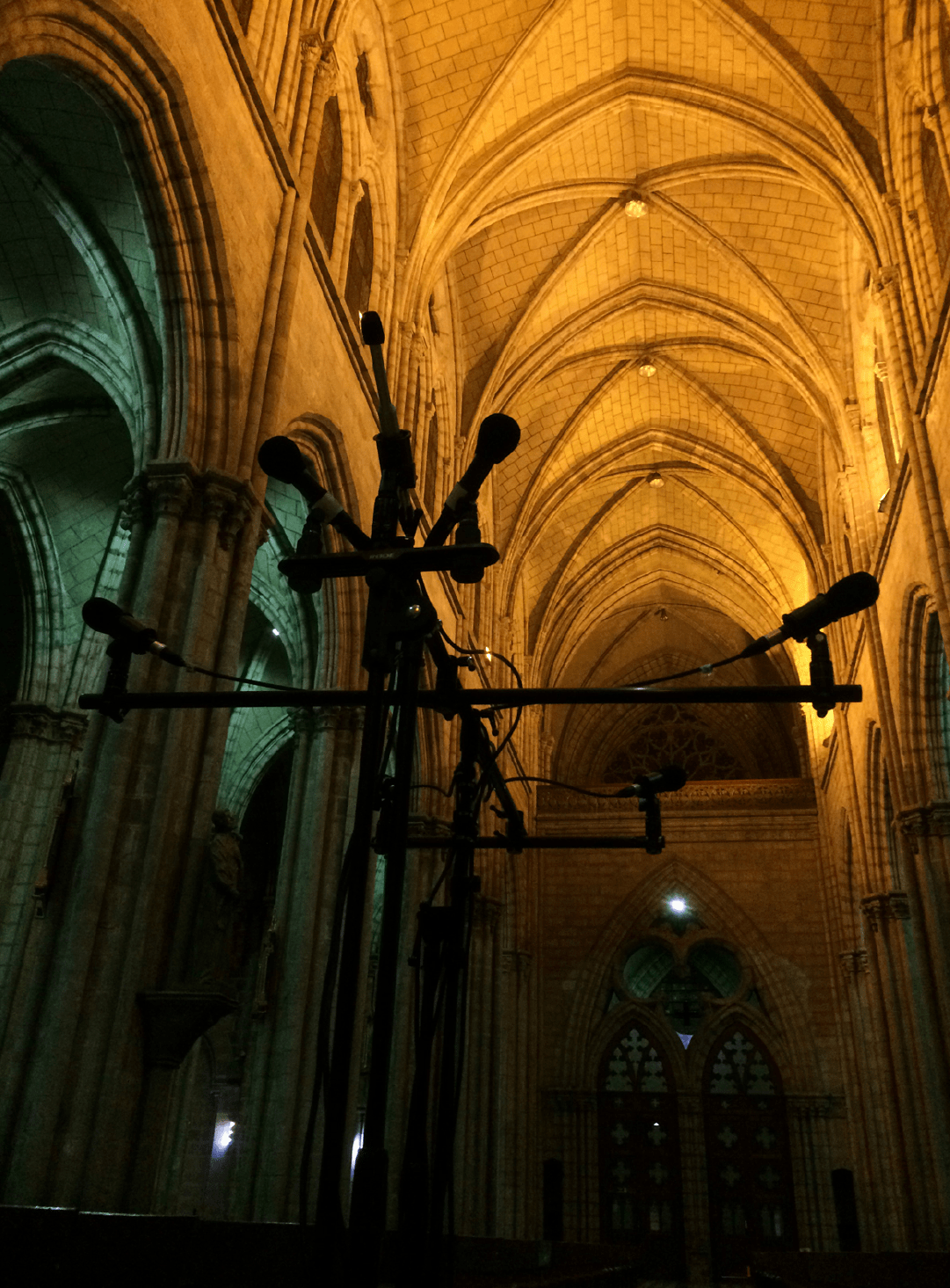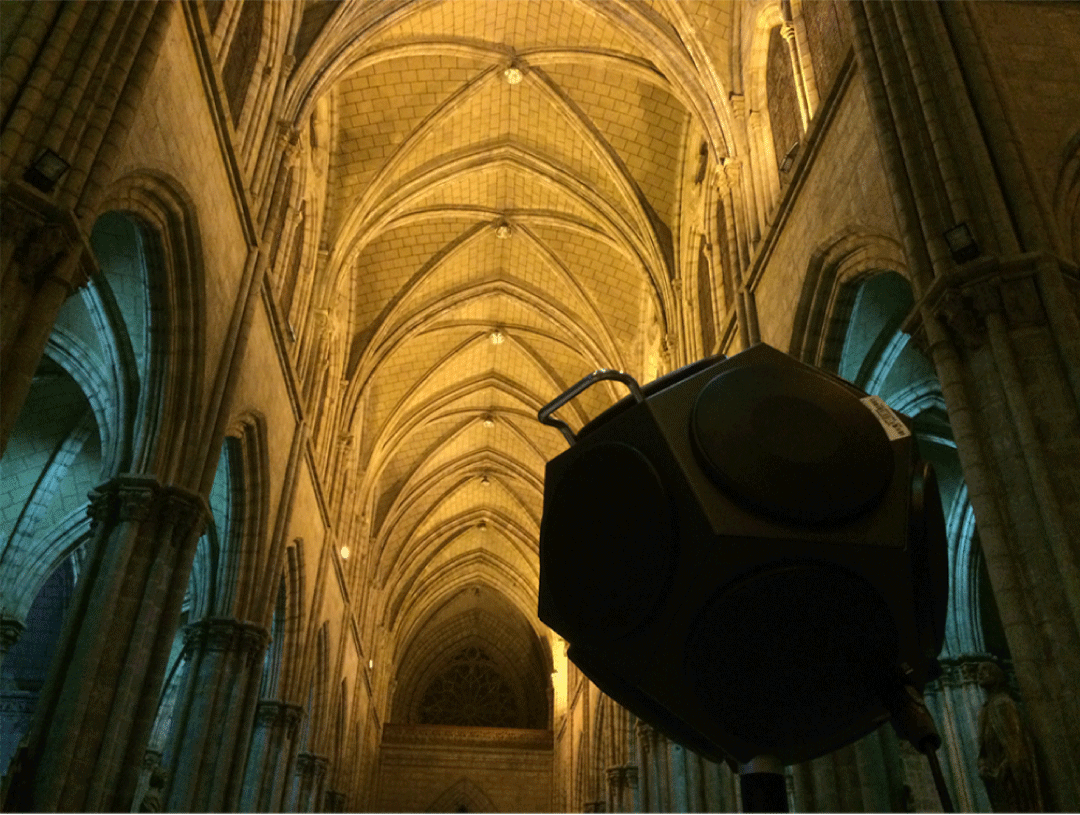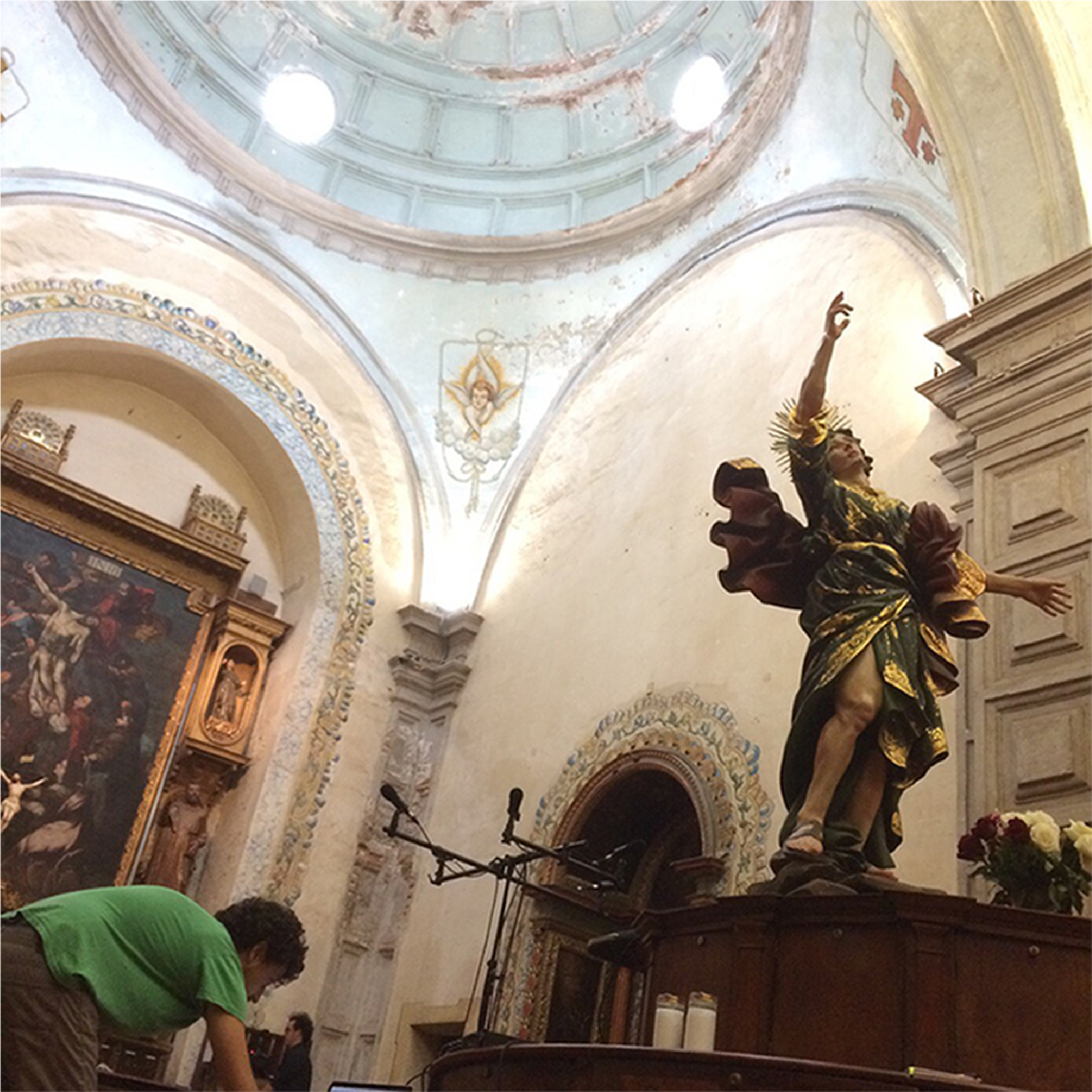Architectural aesthetical qualities are also aural. In this practical and theoretical investigation reverberation, a spatial acoustic phenomenon, will be used as a musical compositional element. Differently put, the ‘sound print’ of a building, its characteristic and unique sonic “fingerprint”, will be used as a compositional tool, as harmony, melody and rhythm are in the traditional musical approach. As a result of an aesthetical understanding of reverberation, a musical work, Composition for a Jazz Quartet and for a Basilica, is presented, which, when listened, makes apparent the emotional impact of architectonic sound.
The reverberation from church Basilica del Voto Nacional, located in Quito, Ecuador, is used to compose the musical work. Using the site’s (sonic) qualities to complete an artwork suggests the site as part of the work of art; and necessitating a listener to bodily experience the composition suggests the need of an audience for the completion of its interpretation. Therefore, Composition for a Jazz Quartet and for a Basilica is a site-specific work which expands to the site’s aural qualities to make them part of it, and by this, to make them part of the listening experience of the listener.































